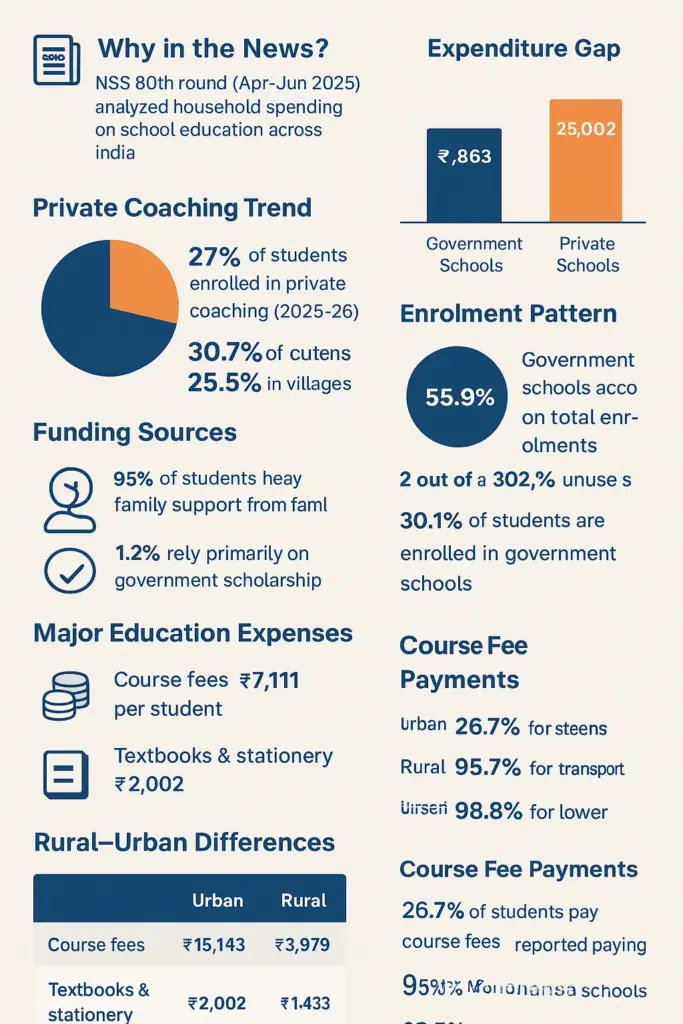August 27, 2025
NSS survey on Household Expenditure on school education
Why in the News?
The National Sample Survey (NSS) 80th round (Comprehensive Modular Survey on Education, April–June 2025) released findings on household expenditure on school education across India.
Key Findings of the Report: NSS Survey
Expenditure Gap Between Government and Private Schools:
-
- Average per-student expenditure in government schools is Rs 2,863, while in non-government schools it is Rs 25,002 — nearly nine times higher.
- Private Coaching Trend:
- In 2025–26, about 27% of students had enrolled in or previously attended private coaching.
The pattern is observed more in cities (30.7%) compared to villages (25.5%).
Enrolment Pattern:
- Government schools account for 55.9% of total enrolments.
- About two out of every three rural students study in government schools.
- In urban areas, only 30.1% of students are enrolled in government schools.
- Across the country, 31.9% of students are enrolled in private unaided schools.
Funding Sources for Education:
- Around 95% of students said they relied primarily on financial support from their family members.
- Just 1.2% of students said government scholarships were their primary source of funding.
Major Education Expenses:
- The largest component of spending is course fees (Rs 7,111) per student.
The next major expense is textbooks and stationery (Rs 2,002).

Rural–Urban Differences:
- Urban households spend significantly more on education.
- Average course fee in urban areas: Rs 15,143.
- Average course fee in rural areas: Rs 3,979.
Course Fee Payments:
- Only 26.7% of students in government schools reported paying course fees.
- In contrast, 95.7% of students in non-government schools reported paying fees.
- Nearly 98% of students in private unaided schools in cities managed to pay their fees.
In rural government schools, 25.3% of students reported paying fees.
October 6, 2025
September 24, 2025
September 23, 2025
September 22, 2025
